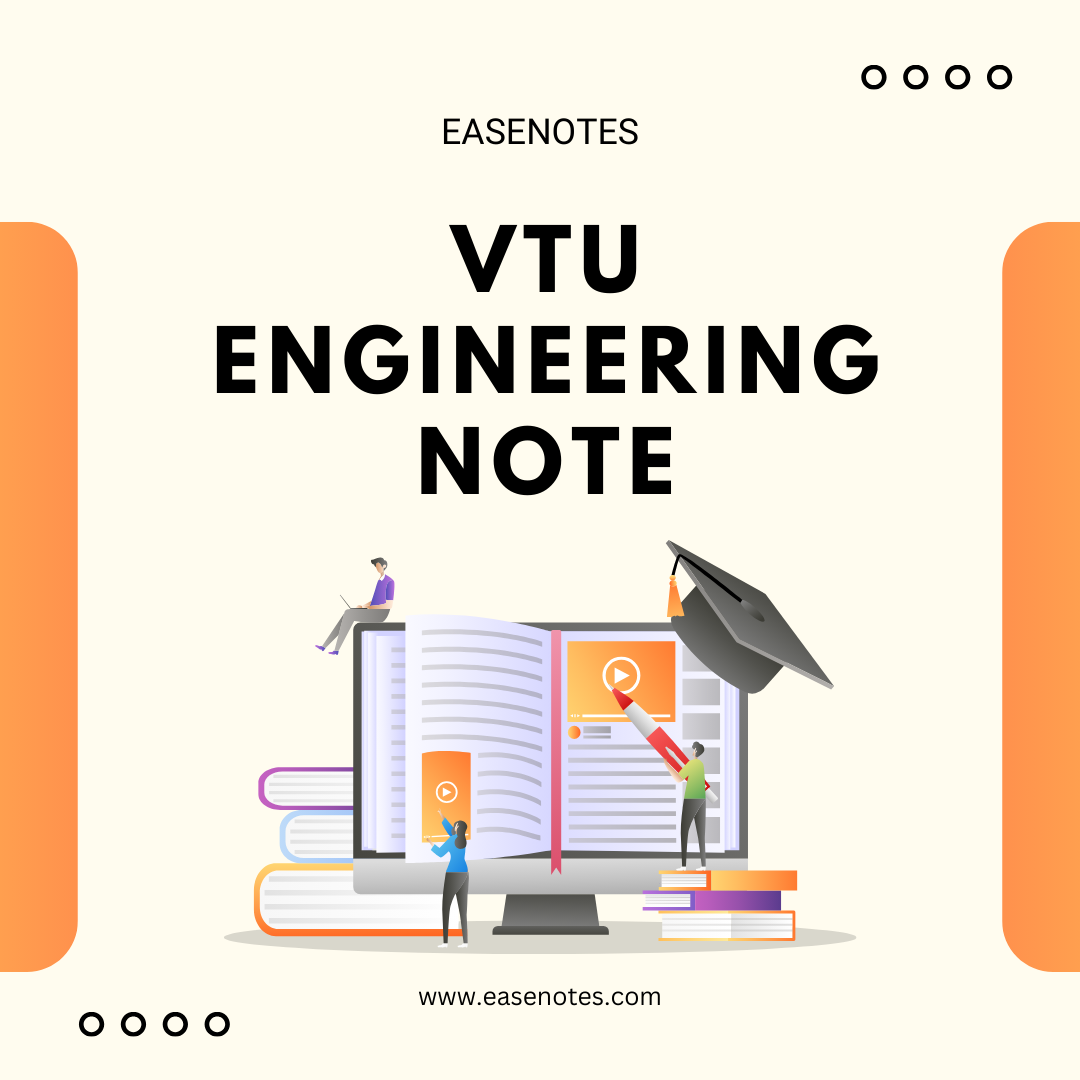
- contact@easenotes.com
- Phone: (+91) 9964716807

BME503-Theory of Machines 2022 scheme notes
VTU University notes on 5th SEM Mechanical Engineering 2022 scheme notes 2024. Study materials and previous year question papers on easenotes 2024.

MODULE 1 Introduction:
Mechanisms and machines
Kinematic pairs: Types and degree of freedom
Kinematic chains and their classification
Kinematic inversions
Velocity and Acceleration Analysis of Planar Mechanisms (Graphical Method):
Velocity and acceleration analysis of mechanisms
Analysis of four-bar mechanism and slider crank mechanism
Mechanism illustrating Coriolis component of acceleration
Angular velocity and angular acceleration of links
Velocity of rubbing
Velocity and Acceleration Analysis of Mechanisms (Analytical Method):
Velocity and acceleration analysis of four-bar mechanism and slider crank mechanism using the complex algebra method
MODULE 2 Static Force Analysis:
Static equilibrium
Analysis of four-bar mechanism and slider crank mechanism
Dynamic Force Analysis:
D’Alembert’s principle
Analysis of four-bar mechanism and slider crank mechanism
Flywheel:
Introduction to flywheel
Calculation of its size for simple machines like punching machine and shearing machine
MODULE 3 Spur Gears:
Gear terminology
Law of gearing
Path of contact, arc of contact, contact ratio of spur gear
Interference in involute gears, methods of avoiding interference
Condition and expressions for the minimum number of teeth to avoid interference
Gear Trains:
Simple gear trains and compound gear trains
Epicyclic gear trains: Algebraic and tabular methods of finding velocity ratio of epicyclic gear trains
Torque calculation in epicyclic gear trains
Applications of gear trains
MODULE 4 Balancing of Rotating Masses:
Static and dynamic balancing
Balancing of single rotating mass by balancing masses in the same plane and in different planes
Balancing of several rotating masses by balancing masses in the same plane and in different planes
Applications
Balancing of Reciprocating Masses:
Inertia effect of crank and connecting rod
Single-cylinder engine
Balancing in multi-cylinder inline engines (primary and secondary forces)
Applications
Governors:
Types of governors
Force analysis of Porter and Hartnell governors
Controlling force, stability, sensitiveness, isochronism, effort, and power
Applications
MODULE 5 Free Vibrations:
Basic elements of vibrating systems
Types of free vibrations
Longitudinal vibrations: Equilibrium method, D’Alembert’s principle
Determination of natural frequency of single degree freedom systems
Damped free vibrations: Underdamped, overdamped, and critically damped systems
Logarithmic decrement
Forced Vibrations:
Undamped forced vibration of spring-mass system
Damped forced vibrations
Rotating unbalance
Reciprocating unbalance
Vibration isolation
Critical speed
Applications